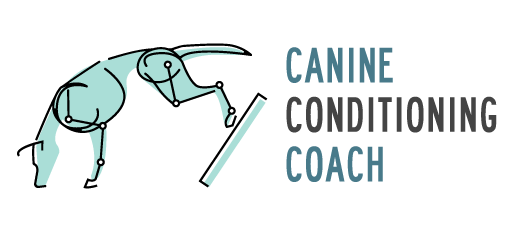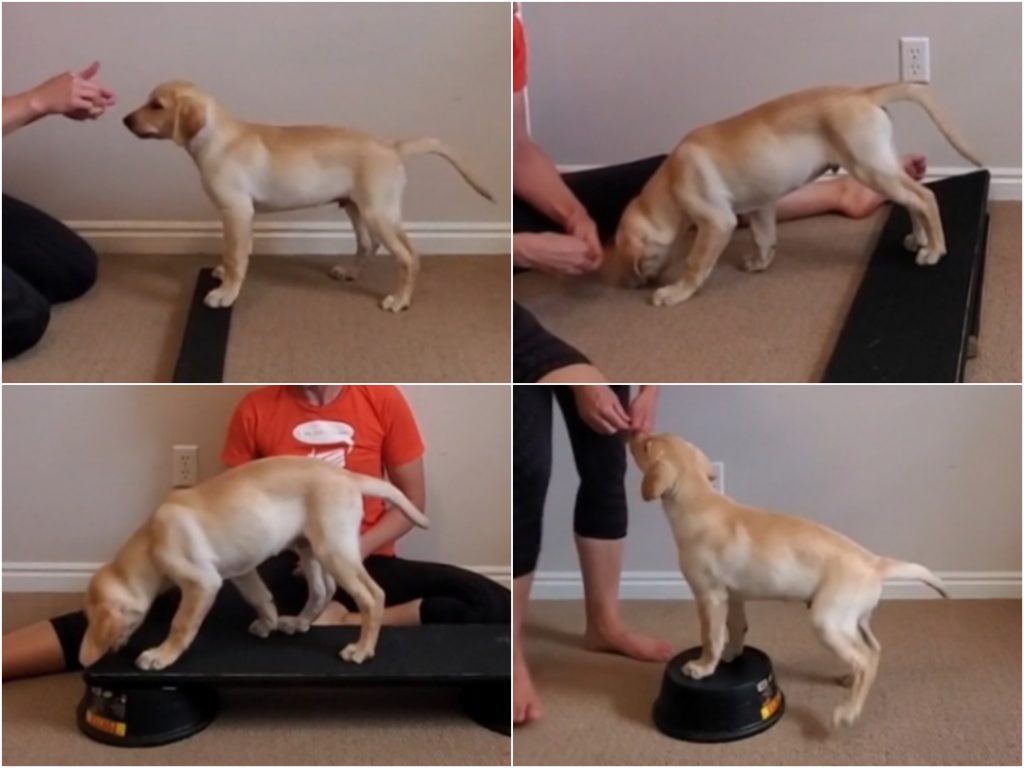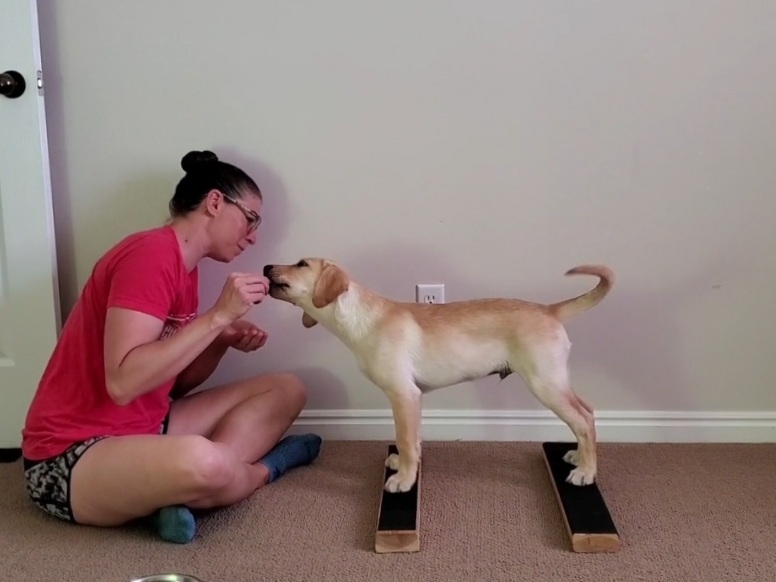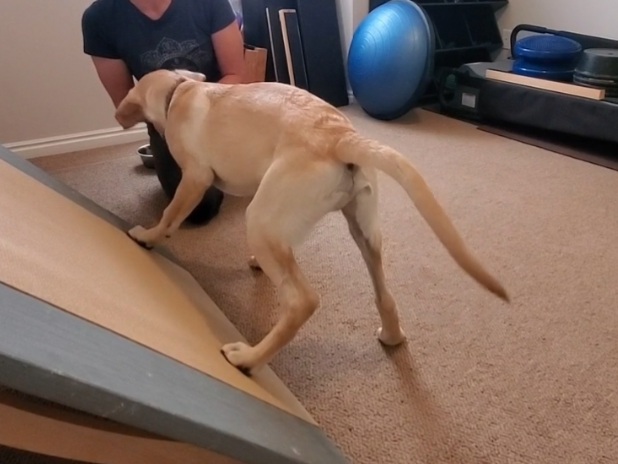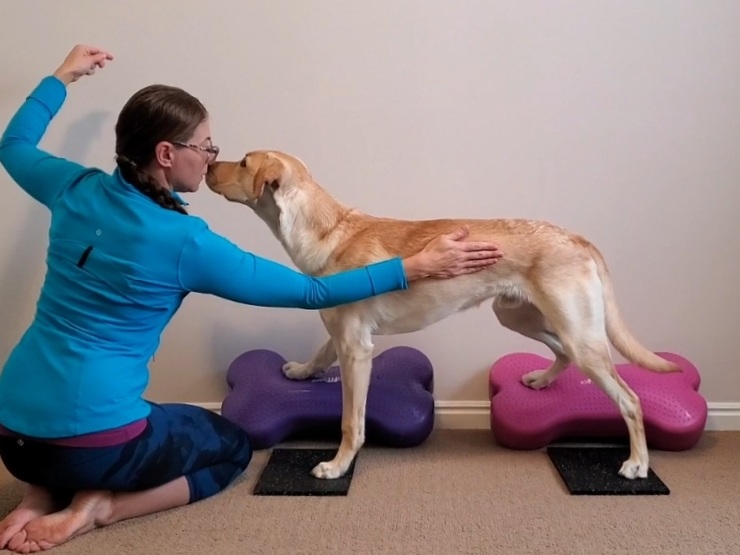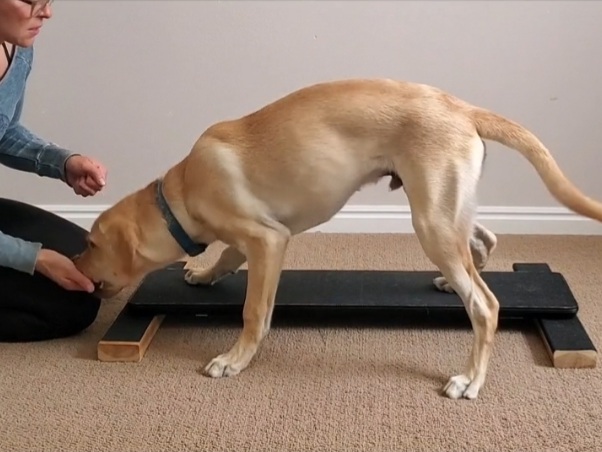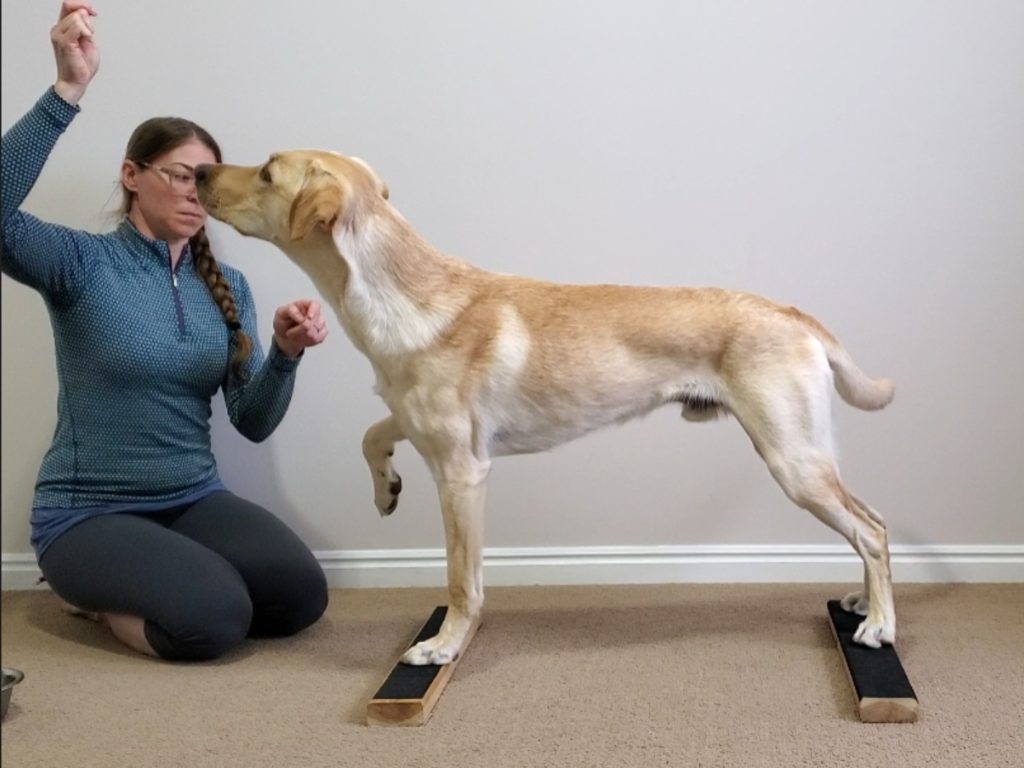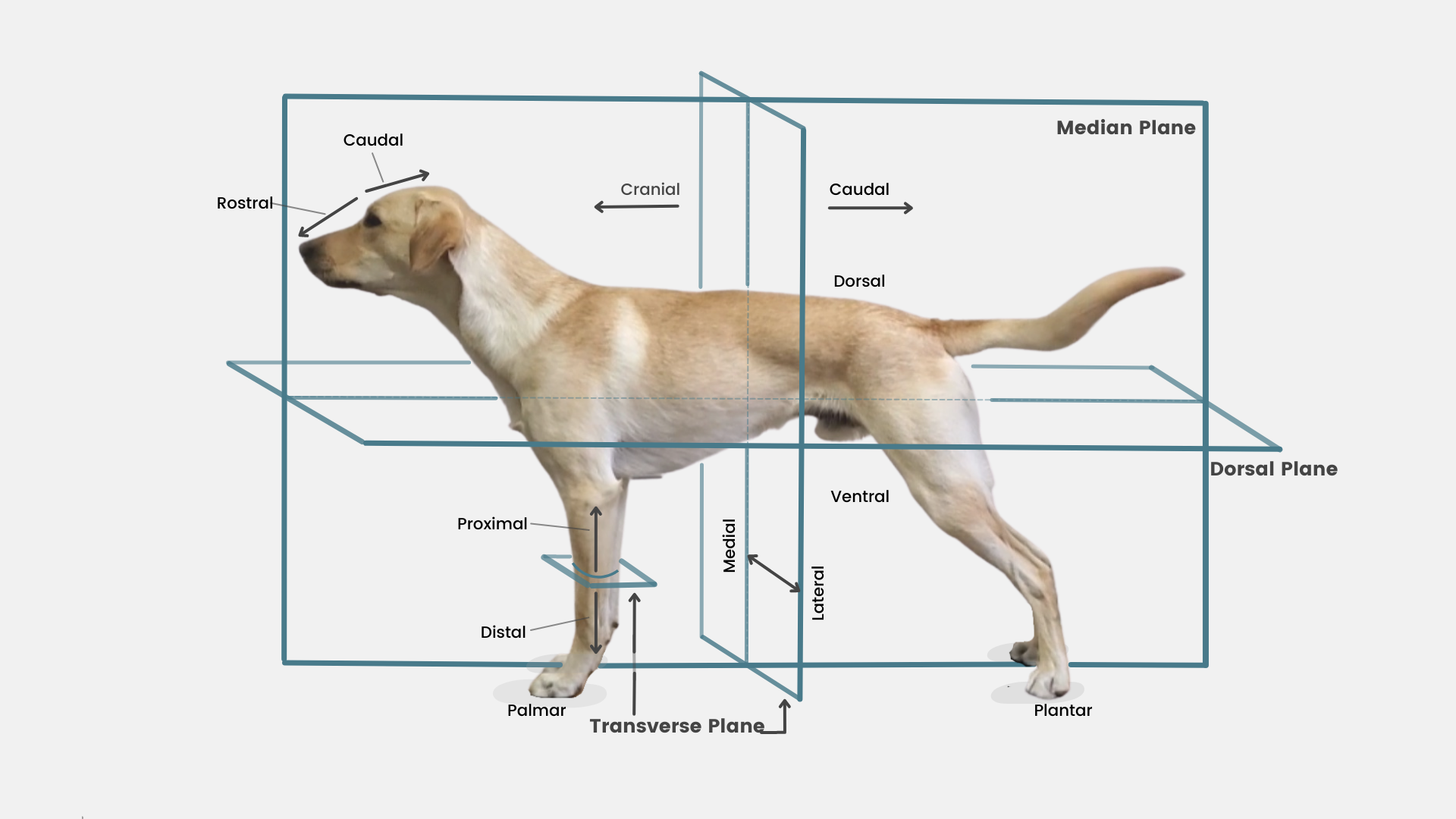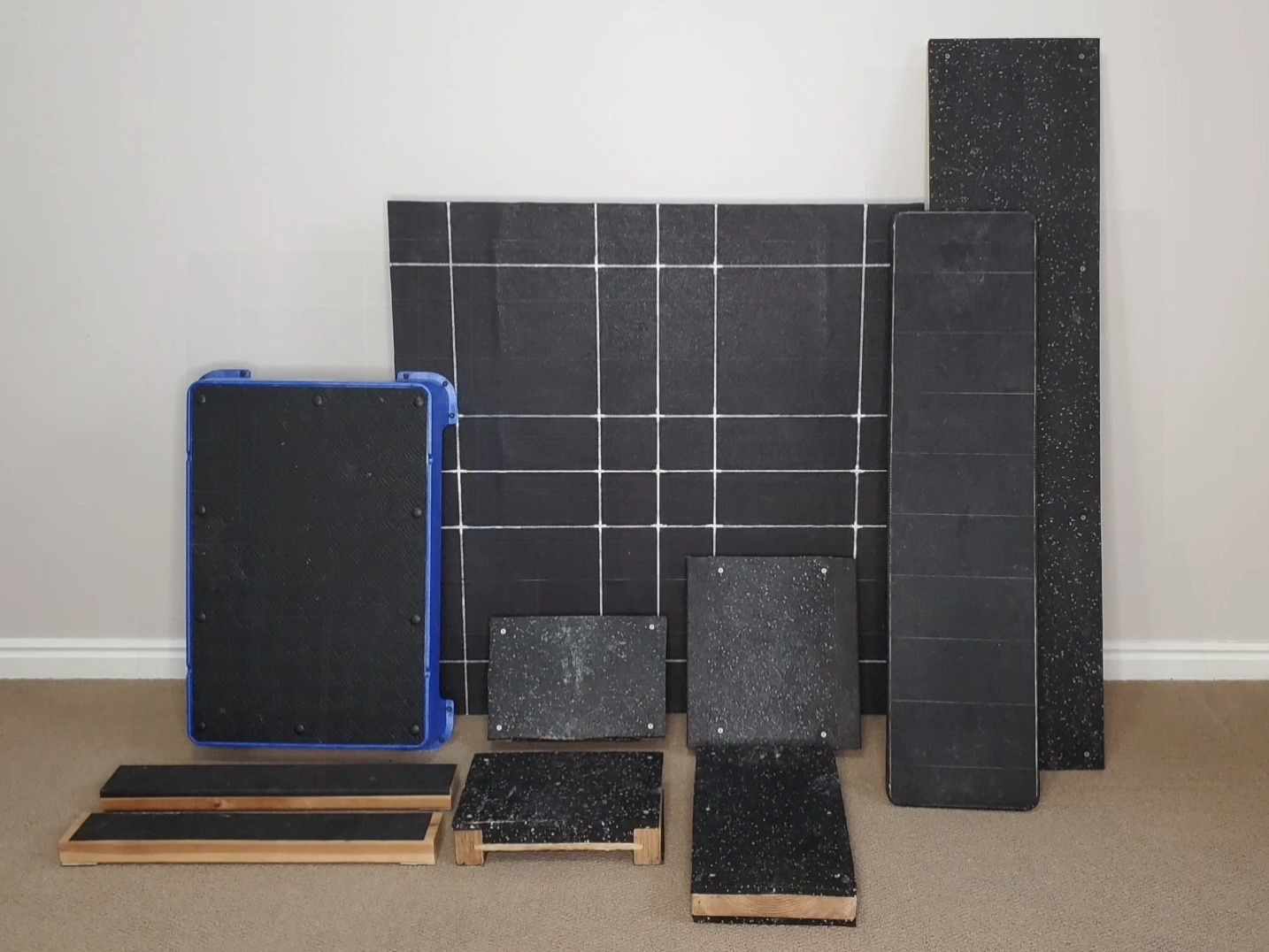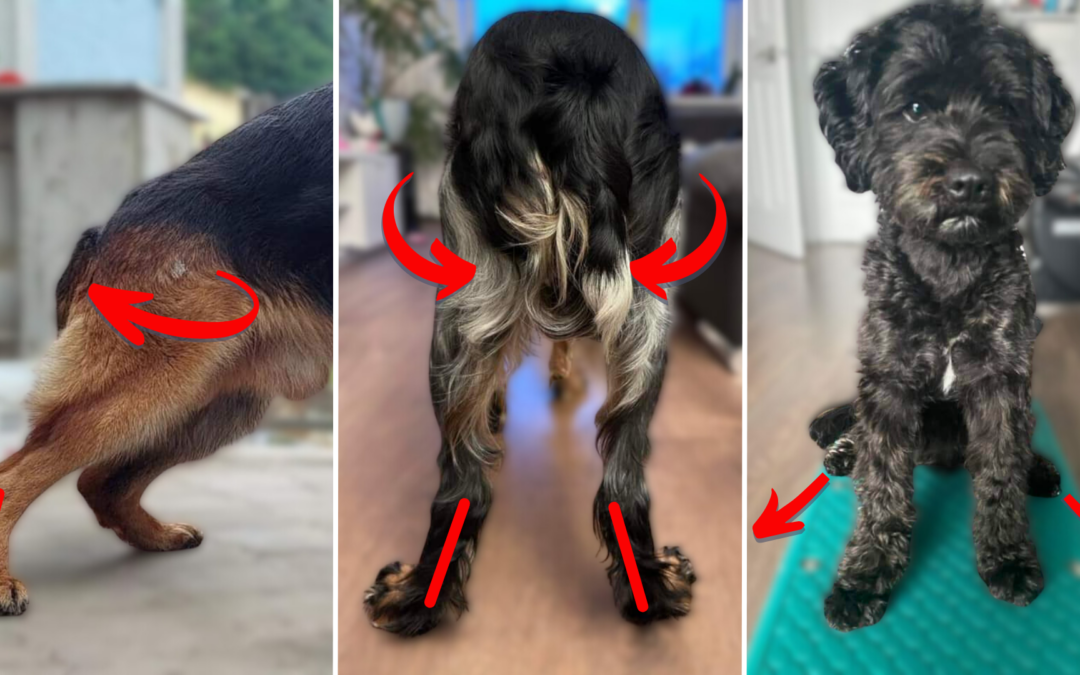Purpose: This video demonstrates our very first attempt at a Front Foot Side Step, and covers Prop Setup, how to cue the movement pattern using Handler Motion (eye contact + chest laser), and what fluency looks like at this level.
Please follow the Prop Setup suggestions to help visually differentiate this exercise from the Square Stand exercise and set your pup up for success.
Equipment: 3 raised foot targets
Note: Some dogs can confuse this exercise with the Pivot exercise, so using a different antecedent (what comes before the behavior), including the cues the handler gives, and a unique prop setup is important.
Targets: Side stepping with the front feet is an important exercise to help strengthen the shoulder abductors and adductors. Because the canine anatomy lacks a collarbone to provide stability to the shoulder complex, maintaining strength and stability through these muscles is important for proper shoulder function over the life of the dog. The additional challenge of keeping the rear feet still also challenges the core muscles and pelvic limb stabilizers as these muscles stabilize against the lateral forces created by the front end.
For those competing in dog sports, like agility, disc or flyball, this movement is especially important for proper weave pole performance, properly decelerating and setting for a box turn, and absorbing landing forces after a vault. Even for the non-sport dog, executing quick turns, and navigating hard floors are improved by having proper muscle strength and stability through the medial and lateral shoulder.
Watchpoints:
- Lack of understanding
- Stepping off the target
- Loss of control
- Change in arousal level
NOTE: It’s important to note that in order for the sidestep to happen (especially in progressions of this exercise), the head must drop down as the thoracic limbs abduct. This allows the dog to see where they are going, and because of the geometry of the thoracic limbs during abduction (start position will be a tall skinny triangle, intermediate position would be a short stretched out triangle, finish position would be a tall skinny triangle again). It’s not a real thing to think the head will be able to maintain position throughout.
This is a difficult and complex exercise that has many prerequisites. If your dog has yet to achieve fluency in the prerequisites, it’s unfair (and likely quite frustrating for all involved) to ask for this challenging of a progression.
